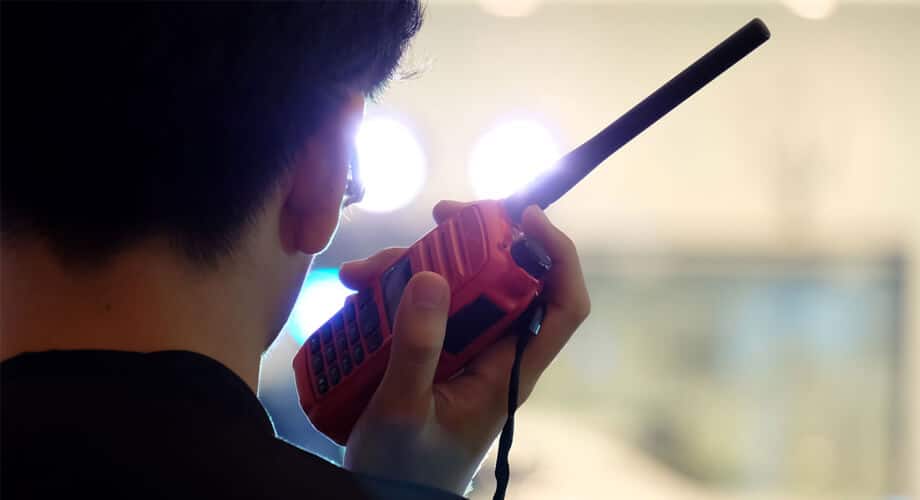Developed during the second world war, walkie talkies are hand held radios used to communicate between a certain range.
At the beginning, they were also called two-way radios, which allowed both ends to communicate with each other.
They work upon radio waves to connect wirelessly on a solo frequency band.
A good walkie talkie now a days have various features like microphone, and a ‘push-to-talk’ button and many others that we are going to discuss in this article.
Other than that, we will also talk about how to use a walkie talkie.
Initially walkie talkie was used by soldiers to communicate with each other during war times.
Now a day’s walkie talkie has become a common gadget that is used by normal citizens as well as police, kids etc.
Each walkie talkie a loudspeaker that also works as a microphone, an antenna for receiving and sending radio waves and a transmitter.
To receive or generate sound a cone made of paper or plastic also exists inside a walkie talkie.
All these materials are in order to function a good walkie talkie.
How to Talk on a Walkie Talkie?
Talking on a walkie talkie is no rocket science, but there are certain Lingo used that one must be aware of before using a two-way radio.
The first thing one must keep in mind that voices can be hard to understand so always be clear in your pronunciation.
Make sure to pause after important words and be selective to keep the communication short.
Always make sure that you hit the transmission button before you start talking as radio signals might take a few seconds start transmitting properly.
After you are done communicating, take your fingers off the button a couple of seconds after you’ve said: “over and out”.
Let us now talk about some famous lingos used while communicating through a walkie talkie.
- Affirmative: Yes
- Negative: No
- Disregard: Ignore previous message
- Copy: Message understood
- Go Ahead: I’m listening
- Mic Check: Is my walkie talkie working?
- Loud and Clear: I can hear you
- Go Again: Please repeat the last transmission
- Roger: Understood
- Stand by: I’m busy but I acknowledge you’re calling me
- Over: I’m done speaking
- Out: Transmission ending
- Wilco: Message has been understood, action will follow
You can consider the above lingos as the universal way in which people talk while using a walkie talkie.
Advantages and Disadvantages of Walkie-Talkies
Benefits of Walkie Talkie
- Walkie talkies are easy to use
- They are robust
- Good for children to keep in touch with parents
- Works at places where cell network doesn’t reach
- Lightweight and easy to carry around
- Can work on a decent range if you buy a good walkie talkie
- Battery life is good
Disadvantages of Walkie Talkie
- Cheap walkie talkies are subjected to interference
- Not suitable for communication over longer ranges
- Radio signals might be weak sometimes
Wrapping it Up
From decades, this device is used by civilians, military, ambulance dispatch, emergency responders, and police.
So, if you are planning to buy a good walkie talkie, then understanding the right way to use it is important and that is what we have demonstrated in this article.
Also go through some common lingo’s that we have mentioned in this guide to easily communicate with one another without any trouble.
So, this was all about how to use and talk on a walkie talkie.








